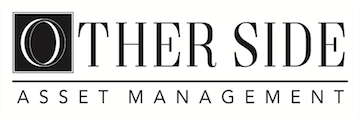
In This Article

The illusion of balance
We’ve often said that when process and perception collide, perception wins the headline while process wins the war. But today, the gap between the two isn’t just wide—it’s dangerous.
Markets are moving like a lightly loaded suspension bridge: cables taut, traffic flowing, everything holding—until a single ship rams a support beam and the whole thing collapses in seconds.
On March 26, 2024, Baltimore’s Francis Scott Key Bridge—an engineering icon spanning the Patapsco River—was sliced through when a cargo ship lost power and struck a key pier. In a heartbeat, the bridge gave way, sending vehicles and workers into the water. That bridge wasn’t obviously failing—it was a silent crisis built over years of deferred maintenance and ignored vulnerability.
That’s the illusion of stability.
Markets, right now, are behaving exactly like that bridge—steady enough on the surface, until the underlying damage takes them down.
Labor is weakening. Inflation is reaccelerating. And passive flows are suppressing the very mechanisms that used to reinforce the structure when cracks appeared.
This isn’t theory. It is structural fragility designed to look unbreakable … built on bad models, lagging indicators, and autopilot momentum.
What follows is a closer look at each fragment—labor, inflation, and market structure—not in isolation, but in unison. Because that’s when a cascade becomes inevitable.
Labor market reality check
Let’s cut through the noise and get brutally honest—what Federal Reserve Jerome Powell has been saying now—and how he’s been positioning policy—has not only been detached from reality, but he’s also actively been shaping a narrative that doesn’t match the facts.
Per the most recent Labor Data earlier this month: Rate-of-Change Breakdown
- Payroll Jobs (Non-Farm)
- MoM: from +73k in June to essentially flat in July → Stagnation
- YoY: Annual job gains have cratered—what once looked healthy is now underwhelming
- WoW: Weekly updates show little to no growth; hiring has gone soft.
- Private Sector Jobs
- MoM: +83k (modest) but not nearly strong enough to support a “solid” job market narrative.
- Full-Time Jobs
- MoM: -440k → massive contraction.
- Multiple Jobholders
- MoM: -523k → folks are losing 2 –3 gigs, not adding them.
- Part-Time Jobs
- MoM: +219k → forced parttime work rising; survival mode.
- Unemployment Rate
- MoM: from 4.1 % to 4.25 % → not crisis territory, but clear uptrend.
- Continuing Claims
- WoW: +16k, now at 1.974M—highest since late 2021 → the labor market isn’t healing; it’s stalling.
If you’ve been reading OSAM for any length of time, you know we’ve been screaming about the Birth/Death model’s absurdity for years. From the August 2024 note “Family Matters…,” we unmasked the illusion:
“How deeply negative would this most recent print have been… without [multiple job holders rising] and the BLS’s absurd Birth/Death modeling contributing +246k jobs!”
“…private sector actually saw a decline of –163k jobs, while the Birth/Death model yielded a +951k increase.” OSAM: Q4 2024
In May 2024 we spotlighted the gap again:
“Infamously, the Birth/Death model ‘decided’ to add 363k jobs, while the household survey showed a de minimis +25k. Garbage in, garbage out.”
“My critiques of the Birth/Death model… it does a terrible job at economic turning points due to its trailing trend ARIMA approach. This maximizes job estimates when the economy is entering a recession… Postpandemic estimates of newbusiness jobs are highest in history.” OSAM: August 2023
What This Really Means
Nothing exemplifies “garbage in, garbage out” more than relying on the Birth/Death model to mask the deep deterioration we’re witnessing:
MoM trends are weak or negative—but Birth/Death creates a false veneer of strength.
Full-time job losses, decreased multiple jobholders, rising part-time work, climbing unemployment, and elevated continuing claims—all signal real trouble … yet Powell’s commentary at the beginning of the month continued to suggest labor is “in balance”—despite the evidence which has been screaming the contrary.
There is no way Powell doesn’t understand the fracture beneath the surface—which makes his optimistic framing heading into Jackson Hole outright disingenuous … leaning on statistical wizardry, not macro strength.
Speaking of “strength” … this is the kind the Fed doesn’t want to see.
Inflation: Then vs. Now
We warned you. Last month, we pointed out the setup for a modest reacceleration in CPI into the back half of 2025, not because of a new tariff narrative — but because the RoC data and base effects told us it was coming.
And now? It’s showing up — in both CPI and PPI — and this time, the BLS didn’t even pretend to hide it behind revisions.
CPI: The Reacceleration Is Here
In the most recent July data:
Headline CPI accelerated to +2.70% YoY from +2.67% prior — its 12th increase in the last 13 months. +0.20% MoM with Core CPI coming in at +3.06% YoY (highest since February), up from +2.93% YoY — with a +0.32% MoM move.
The progression is clear: inflation is rising again … with the market is pricing in 2.5 rate cuts in 2025!
You couldn’t make this up if you tried.
Sticky Shelter Still Slogging Higher
Shelter inflation — that infamous lagging component — remains the same broken record:
- Shelter: +3.67% YoY (slight slowdown from +3.80%)
- Rent: +3.55% YoY (vs +3.77%)
- OER: +4.06% YoY (vs +4.14%)
That’s 63 straight months of upward Shelter inflation.
Last month, we reminded readers that CPI’s largest input component lags by ~18 months. And we questioned how the Fed can use this to NowCast anything with a straight face … still, nothing has changed.
Core CPI Details = No Real Relief
Many Core CPI components accelerated:
- Medical Care: +3.51% YoY (vs 2.77%)
- Transportation Services: +3.53% (vs 3.40%)
- Used Cars: +4.79% (vs 2.79%)
- Education: +2.36% (vs 2.24%)
This isn’t disinflation. It’s breadth.
And even “SuperCore CPI” (Core Services less Shelter) — which bottomed before tariffs — is now +3.1% YoY, accelerating +0.48% MoM.
The Fed will cut into this … because … the Fed! (palm meet forehead)
When it comes to PPI … the Inflation pipeline fired back up
Headline PPI for July came in +3.3% YoY (vs +2.37% prior) +0.94% MoM — the largest since March 2022 … Core PPI also accelerating +3.66% YoY (vs +2.63%)
This is what we forecasted a month ago: that June’s PPI deceleration — which we correctly noted might be short-lived and was not a green light for rate cuts.
Well… July PPI obliterated expectations, especially in Services:
- Services PPI: +4.06% YoY (vs +2.78%)
- Food: +4.20% YoY (vs +3.0%)
- Core goods: +0.4% MoM
This is the highest YoY PPI print since February
Hedgeye Risk Management also noted that wholesaler/retailer margins surged +2.0% in July — machinery & equipment wholesaling spiked +6.7% … the PPI pipeline is hot. Period.
Last Month’s Experts? All Wrong. Again.
In July, 100% of surveyed economists missed the PPI print — to the high side. As we said:
“That’s not bad luck… that’s bad process.”
We also said that PPI leads CPI. And again, that’s playing out… just as the system predicted.
The Narrative vs. The Process
Last month:
- We pushed back against tariff-blaming as lazy analysis.
- We warned that CPI would likely wobble — not collapse, not spike — and PPI would tell the tale first.
- We emphasized RoC, base effects, and empirical setups over fearmongering.
This month?
- All of that came to fruition.
- CPI and PPI reaccelerated.
- Shelter is still distorting.
- Real-time housing and labor data (as we’ve written extensively) tell a deeper story.
- And the Fed? Still steering blindfolded.
The bottom line is the Inflation setup wasn’t a Surprise — IT WAS A SIGNAL!
That being said, this isn’t a panic moment, but it is validation. Everything we laid out in Q2 — from decelerating PPI into a base effect trough, to sticky Shelter, to cracks in real-time housing — has now shown up in the CPI and PPI data for July.
Narratives come and go, but process prevails. And in the data? The signs were all there.
When narratives collide with math
Every so often, the dissonance between what policymakers say and what the data screams grows so wide, you could drive Powell’s credibility through it.
The latest example? Fed Chair Jerome Powell’s Jackson Hole speech.
In it, Powell signaled a shift — not just in tone, but in posture — openly acknowledging that a rate cut may come sooner than expected. He spoke of a changing “balance of risks,” suggesting that the labor market now warrants as much concern as inflation.
Seriously? A whole three weeks after standing before cameras at the July FOMC and declaring the labor market “strong”, Powell suddenly wakes up to the same weakness we’ve been flagging well over a year? Though, most recently in June we wrote:
“With price stability being one side of the dual mandate, labor/employment is the other … which “on the surface” suggests strength, yet a gradual and concerning deterioration, well-supported by recent Rate of Change (RoC) data, beginning with the most recent Jobless Claims data, where Initial Claims have reached a peak of 247,000, marking a steady ascent. Moreover, the rolling 4-week average has climbed to new highs since October, offering a stark indicator of labor market strain.”
We continued:
“So, when Powell talks about the economy being in a solid position, but fearful of a reacceleration of inflationary pressures, given his dual mandate, he seems to be completely ignoring there is another side of his dual mandate coin … where the data seems to be screaming just a little bit louder?!”
We dedicated multiple sections to this very topic in our June note, one titled, “The Fed’s other mandate” the other, “Powell and payrolls” because the data has been deteriorating so rapidly … this, a MONTH before Powell took to the podium following July’s FOMC meeting where he mumbled and bumbled through the easiest of softball questions lobbed to him by the hack “journalists” who cover the FOMC meetings.
Again, in March of 2023 we highlighted significant negative revision (after negative revision):
“So, what did this month’s labor report have in store for us?! Among other things, negative revisions found their way back into the data set, with last month’s 353K ‘beat’, being negatively revised by -125K jobs, to +229K … meh, what’s a meager THIRTY FIVE PERCENT NEGATIVE REVISION amongst friends?! It’s just the largest MoM negative revision in roughly 2 years … (I’m betting no one got fired)?!
It also brought another massive disconnect between the Household survey and NFP data with the Household survey being reported down -184K jobs; making it the 3rd consecutive month of job loss, totaling a negative -898K over this time frame … this divergence between NFP and the Household survey, has opened up to nearly 3.7-million jobs! uh, Houston … we have a massive problem?!
If only financial media outlets, the Federal Reserve Chairman, 785 PhD economists who work at the Fed or any major Wall Street firm would address it as opposed to cheerleading … “yay labor”!”
While we used the word “disingenuous” earlier, “Deceitful” wouldn’t be out of bounds here, though I digress…
Still, the moment Powell’s tone softened, markets cheered. Economists applauded. The media lapped it up.
But if the Fed truly honors its dual mandate, the disconnect is glaring.
Because cutting rates into this setup doesn’t balance risk — it pours gasoline on it. When inflation is reaccelerating and jobs are evaporating, rate cuts become political cover, not policy precision. And when the consequences surface — inflation, inequality, volatility — Powell will point to tariffs or other exogenous forces as the scapegoat.
Let’s be clear: the data has been screaming for months.
We’ve shown it repeatedly — in this note and over the last 18+ months — the labor market is breaking.
July’s jobs data wasn’t just soft. It was ugly beneath the surface:
- Full-time jobs collapsed by –440k MoM
- Multiple jobholders fell by –523k
- Part-time jobs (for economic reasons) jumped +219k MoM
- Unemployment ticked up to 4.25%
- Continuing claims rose WoW to 1.974M — the highest since 2021
These aren’t statistical quirks. They’re fractures. Cracks in the foundation. And headline payrolls? Still a mirage — propped up by the flawed Birth/Death model, which we’ve been warning about for years.
Back in early 2024, that model “added” +363k jobs in a month where the household survey showed just +25k. We’ve cited this before. Mike Green has exposed it. Yet the model lives on, manufacturing the illusion of resilience.
But now, even the manipulated numbers can’t hide the trend. Which explains Powell’s sudden pivot. Because while Powell inches toward rate cuts, inflation data is doing the exact opposite.
July CPI and PPI confirmed what our RoC process forecasted months ago: base effects would create a floor … and likely a bounce into Q3.
Well — that bounce is here.
- Headline CPI: +2.70% YoY (12th rise in 13 months)
- Core CPI: +3.06% YoY, +0.32% MoM
- SuperCore: +3.1% YoY, +0.48% MoM
- PPI: +3.3% YoY, +0.94% MoM — hottest since March 2022
- Core PPI: +3.66% YoY
- Services PPI: +4.06% YoY
Nearly every major subcomponent — from Used Cars to Medical Care to Retail Margins — is reaccelerating.
Yet the market, in its infinite wisdom, is pricing in 2.5 rate cuts in 2025.
The Fed’s no-win trap
This is the corner we’ve been warning about.
If Powell cuts to cushion employment, inflation gets worse. If he stays tight to fight inflation, employment deteriorates faster.
Either way, the Fed breaks one mandate to defend the other. But the truth is, neither can be achieved in isolation anymore. The two have decoupled.
As we wrote in July 2022:
“The Fed is attempting to fight a structural, supply-side inflation with a blunt demand-side tool… and now they’re running headfirst into their employment mandate.”
And this isn’t some academic dilemma — the lagging inputs in CPI (Shelter +3.67%, OER +4.06%, rents still rolling) haven’t even caught up to real-time data and won’t for 12–18 months.
But none of this should surprise readers of this note — or of our process.
- We flagged labor fragility months ago.
- We warned about base effects driving a CPI/PPI bounce.
- We outlined the dual mandate trap — and now it’s here.
So, while Powell softens and Wall Street celebrates, we’ll do what we always do: ignore the narrative, follow the math, and do our best to stay a few steps ahead of the crowd.
Because this isn’t about stories … It’s about signals … and the signals are screaming.
When fundamentals don’t matter
Screaming that the labor market is fracturing. Screaming that inflation is no longer cooling — it’s reaccelerating.
And yet equity markets? Circling near all-time highs. What’s driving that disconnect? Not earnings. Not margins. Not fundamentals … it’s the structure!
Because in today’s market, price doesn’t reflect reality — it reflects flows. Which brings us to passive.
Autopilot at 35k feet
We’ve said it before: passive investing isn’t the enemy. It’s simply an algorithm — rules based … money in, “buy” tickets out.
The problem isn’t passive itself.
It’s what happens when everyone turns it on at the same time — when the flight crew stops looking out the window and nobody’s actually flying the plane.
Over the past decade, regulation, fiduciary incentives, and industry design have herded trillions into the same mechanical trade. Investors outsource decision-making for the illusion of safety. Asset managers collect fees for doing less. Policymakers bask in the optics of “low-cost diversification.”
But under the surface, this coordination breeds fragility — not resilience.
Flows become dictated by calendar and employment, not conviction. Valuation becomes irrelevant. Price stops being a signal and starts becoming a policy outcome.
So, when labor market data falls apart, or inflation accelerates, or the Fed contradicts itself in broad daylight … markets don’t respond like they used to. Because the structure doesn’t allow them to.
We’ve seen this movie before … from our March 2023 note:
“The crowding has already happened. What’s left is a false sense of stability … until something breaks.”
That’s the real risk.
It’s not just that passive investors ignore fundamentals — it’s that the structure suppresses feedback. And without feedback, there’s no correction. No self-regulation. Just blind momentum — until the exit narrows.
This dynamic has warped everything from price signals to competition.
Common ownership among passive giants now distorts incentives across entire industries. “Indexing” was supposed to democratize access — instead, it’s concentrated control. And as a growing body of academic work shows, this structural overlap is siphoning billions from consumers annually.
It’s not a conspiracy … it’s design.
Broken feedback loops, everywhere
And the damage doesn’t stop at markets.
We’ve long criticized the BLS’s Birth/Death model — a black-box mechanism that manufactures job growth based on statistical assumptions rather than observable reality.
As we said in September 2023:
“Powell will be cutting rates into a reacceleration. Labor will look worse just as inflation picks up. That’s the trap.”
We’re in that trap now.
Earlier this year, the Birth/Death model “added” hundreds of thousands of jobs in a month where the household survey showed barely any. Months later, the BLS revised the numbers — quietly, with no accountability.
That revision wasn’t just a rounding error. It was the tell.
It exposed the structural rot at the core of how our institutions gather, interpret, and communicate data.
Powell — and the Fed — had this data before the public did. Yet he stood in front of the country and spoke of “strength,” all while holding a different set of facts. It’s not just bad modeling. It’s broken trust … and it rhymes.
The same failure of feedback that distorts labor statistics also distorts asset prices. The same mechanical logic that inflates phantom jobs also props up phantom valuations.
“We’ve replaced a system where price was information with one where price is a policy outcome.”
We’re flying blind — in labor data, in inflation metrics, and in the markets.
Final thoughts (disconnect)
And this brings us to the heart of the matter.
Jerome Powell stood at Jackson Hole and hinted at easing … markets took the bait — again … equities ripped higher; volatility fell. The soft-landing narrative took center stage.
But inflation? Rising. Labor? Cracking. Birth/Death distortions? Exposed. And yet passive flows keep pouring in like it’s 2021.
The disconnect isn’t just large — it’s systemic.
Passive doesn’t cause traditional inflation as we know it, it causes asset price inflation … while anesthetizing the market’s ability to respond to it. It mutes the signal … it glosses over risk … just like Powell glossed over the job revisions he already had in hand.
And because no one’s steering the plane — not investors, not allocators, not policymakers — the illusion of control persists … UNTIL IT DOESN’T.
As we’ve warned before:
“We’ve turned investing into a pre-programmed flight path that feels smooth — right up until turbulence hits and no one’s hand is actually on the controls.”
Markets are pricing in cuts. They’re ignoring rising CPI. They’re shrugging off the collapse in full-time employment. And they’re doing it because structure > signal.
But structure can’t override gravity forever.
The crowding grows. Again, the exit narrows. And when the disconnect finally snaps — as it always does — it won’t be gradual.
It will be a sudden decompression.
Just like the Francis Scott Key Bridge — it only took one compromised support to bring down the entire span. Not because the structure wasn’t massive … but because it wasn’t structurally resilient!
I want to be very clear referring back to something we said in our introduction as we close:
“That bridge wasn’t obviously failing—it was a silent crisis built over years of deferred maintenance and ignored vulnerability.”
There is a lot of stress and weight on this bridge that are financial markets right now … 0DTE options touched 69% of flows on Friday 8/22/25 (ALL-TIME HIGH) … something I’ve never seen in my 29 years in this industry, nor thought I’d ever see in my lifetime.
No one knows what the trigger will be … we don’t know if it will be the trading of short-term options, or any of the host of things that we discussed in this note which will facilitate a significant drawdown, from cracks in labor markets to increase in pricing pressures?!
At the same time, it could be something we didn’t have time to discuss this month, be it the massive rise in defaults on student loans, or elevated mortgage defaults.
Additionally, no one knows when?! Our current positioning at the moment is cautiously optimistic as breadth has been broadening as of late. Hedgeye models are predicting a move from our current choppy Quad 3 (stagflation) to a Quad 2 (reflation) next quarter, followed by a Quad 1 (goldilocks).
Given all the data we just presented, some might ask how anyone could be optimistic or bullish?!
In just under 3 months, the U.S. Federal debt has rocketed up by nearly $1-trillion dollars … roughly $20+ billion per day. From August 11th through the 24th we added north of $200 billion alone!
This has thrusted TRILLIONS in government spending, which, coupled with rate cuts and continued short selling from those expecting crashes from all-time highs can go a very long way for an extended period of time … sending equity markets much higher for exceedingly longer than most can fathom through short squeezes, passive rebalances, the expansion of collateral and borrowing, among countless other things that promote buying!
WITH THIS IN MIND, NO STRONG ECONOMY NEEDS TO BORROW TRILLIONS OF DOLLARS TO PERPETUATE SPENDING WHILE CUTTING RATES AMIDST A MASS DETERIORATION IN THE HOUSEING MARKETS (which we didn’t even have time to broach). The economy is NOT strong, BUT markets ≠ the economy.
That being said, you better have a risk management plan and stick to it … for when things do fall … first things happen slowly … then all at once … just ask Baltimore!
As always … Good investing!!

Mitchel C. Krause
Managing Principal & CCO

4141 Banks Stone Dr.
Raleigh, NC. 27603
phone: 919-249-9650
toll free: 844-300-7344
mitchel.krause@othersideam.com
Please click here for all disclosures.




